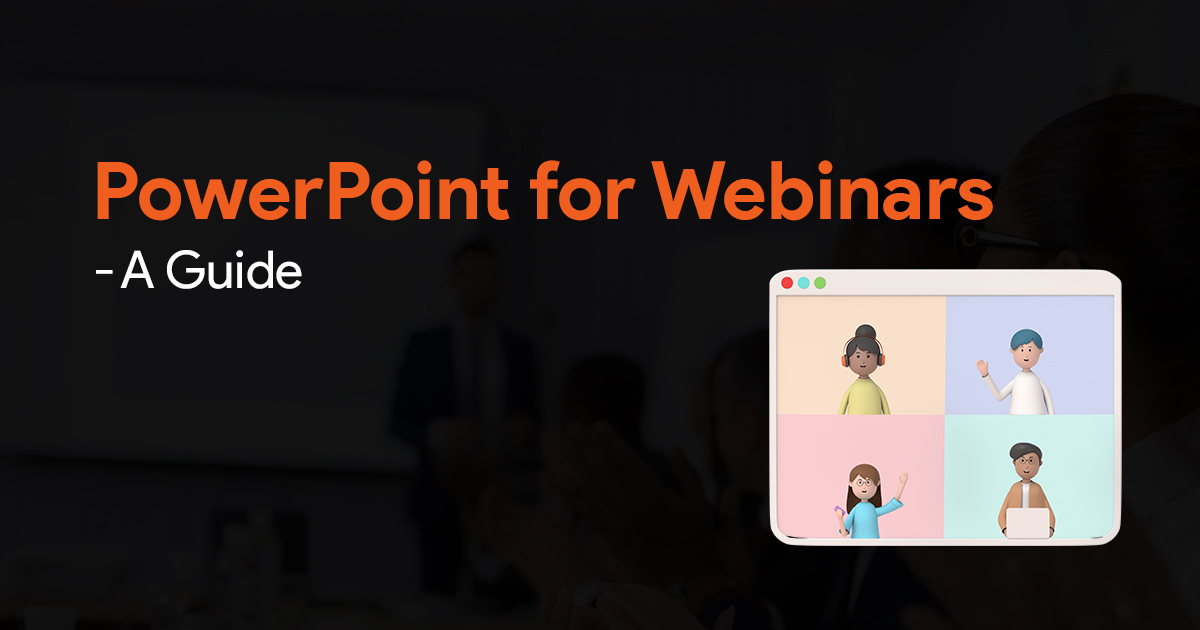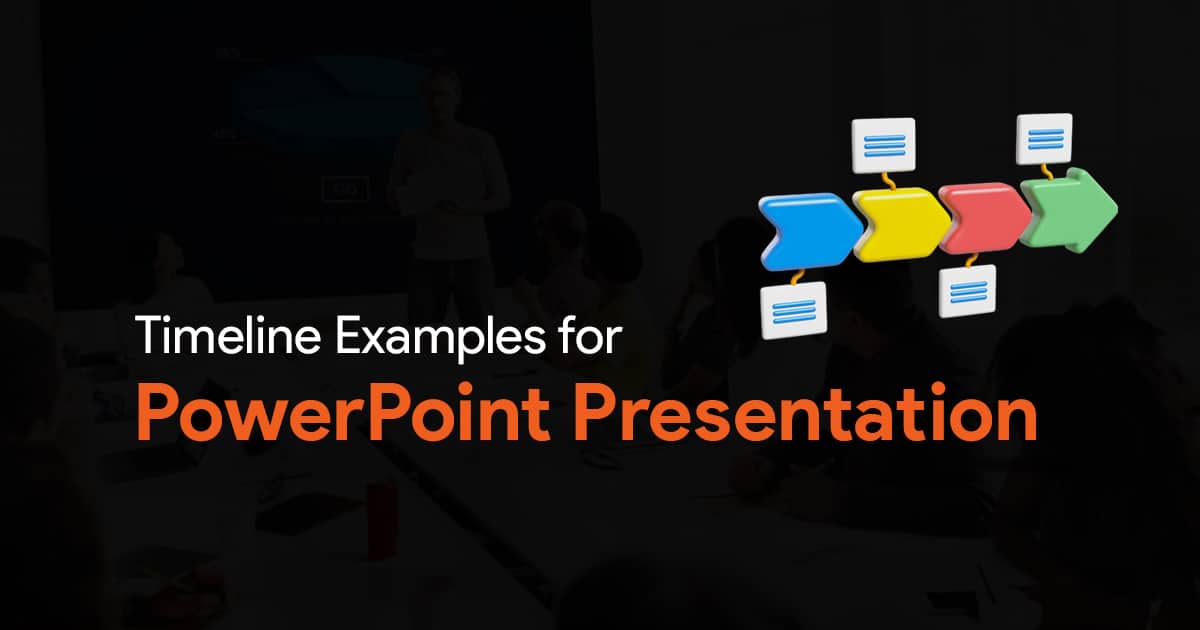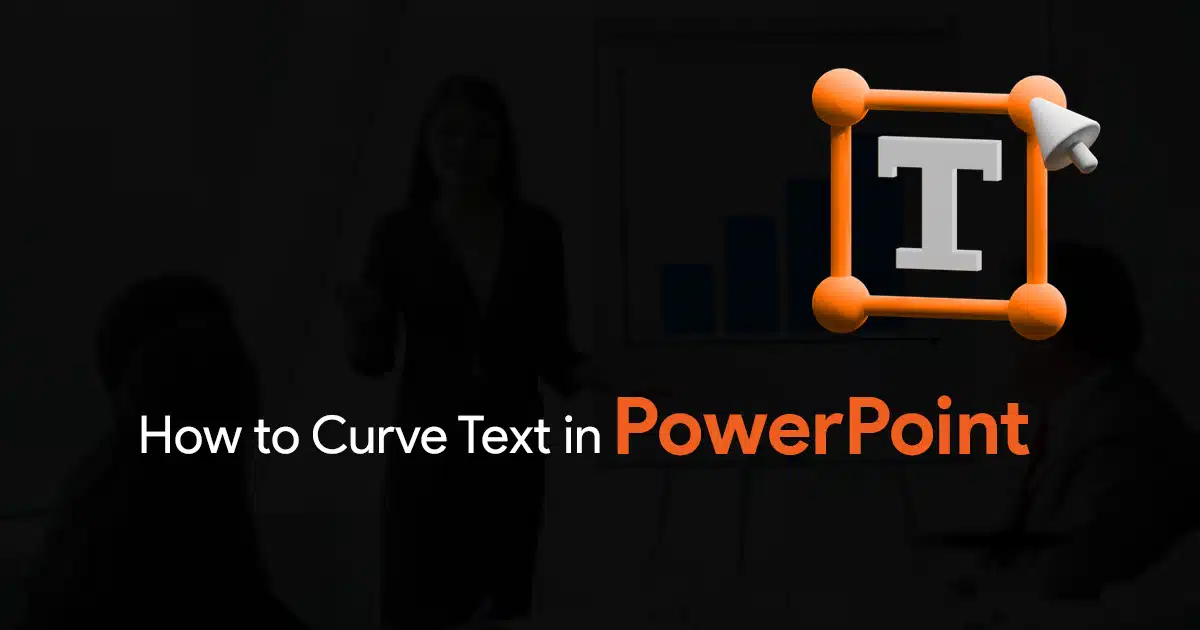PowerPoint Presentations for Webinars – A Guide

PowerPoint are often used to create webinars. By using the in-built features, you can create engaging and informative slides for your webinar. In this article, let’s dive deep into using PowerPoint for webinars, exploring best practices, and highlighting useful functionalities.
How To Use PowerPoint For Your Webinar
When using PowerPoint for webinars, there are a few features that you can make use of. But keep in mind that you’re going to have to focus on keeping your audience engaged from the start. Since webinars can get boring at times, users can quickly exit your presentation. It’s very easy for you to bore your audience out, and you WILL lose them if they lose interest. So keep this in mind while designing your slides.
You can use the screen sharing feature to present your PowerPoint presentation in your webinar, and you can share your presentation in 2 different ways.
You can either do a normal slideshow while sharing your screen, or just share your screen during the normal view in PowerPoint. Here are the pros and cons of both these methods:
When running your slideshow while sharing your screen, it’s just like presenting in real life, but you won’t be able to use features like Presenter View. Whatever is on your screen, is what your viewers will see. A quick workaround for this would be to print your slides or notes, and have them as physical copies with you when you present your slides.
If you decide to showcase your presentation in the normal view, but the viewers will be able to see everything on your screen, including all the slides, the ribbon, your taskbar, etc. Some may feel that this looks unprofessional. So I don’t recommend this method, but if nothing else works, this is the way to go.
Different apps have features that you can make use of. We’ve written about how Teams has a feature that lets you share your presentation during a meeting in such a way that the viewers can go through them at their own pace. So if you’re using any external app for your webinar, you might want to check out what features they have as well.
Okay, now let’s focus a bit on creating a good presentation for your webinar:
How to Create a Webinar PowerPoint Presentation
Audience:
Start by identifying your audience. Who are you going to be presenting to? Your messaging must resonate with them. Based on your audience, you can try different strategies to keep them engaged and interested in your presentations. Do spend some time researching your audience, because it will pay off later on.
Structure:
Next you need to plan out everything from how you’re going start the presentation to the conclusion. You can even use a pen and paper to create an outline. Doing this can help create a solid logical flow for your presentation.
Keep it interesting:
Keep in mind that your audience can get bored easily, so stay away from using too much text in your slides. Whatever text you need to add, make sure you add them as short bullet points. Use high quality images, and white space to declutter your slides to get the best viewing experience.
Animations and transitions:
Do not go overboard with animations and transitions. Be very careful with the animations you choose, they should be subtle. People who are already bored of your presentation won’t have the patience to sit through complex transitions, so be as minimal as possible.
Remember that readability is key. Use large fonts, with good contrast between background and text, and choose an easy-to-read font.
You might also want to share your PPT file with your audience after the webinar. You could share the PPT itself, or you could share a screen recording of your presentation.
Pro Tips for Great PowerPoint Webinars:
Make sure you remove distractions, switch off notifications and keep your system on do not disturb during your webinar. You don’t want any awkward notifications ruining the flow of your webinar.
If you’re planning on sharing the presentation with your audience, you could include interactive menus made with hyperlinks. Or just use hyperlinks in general to give your audience more information.
Use Google Forms to get audience feedback to ensure that your webinar worked. Find out what they learnt from your webinar, or simply ask for feedback.
Conclusion
I hope these steps were easy to follow, and that you’re able to create your webinar on PowerPoint easily. If you’re struggling to create your slides for your webinar, check out SlideBazaar. We’ve got PowerPoint templates for a wide range of use cases, and I’m sure you’ll definitely find a template that will work for you.


